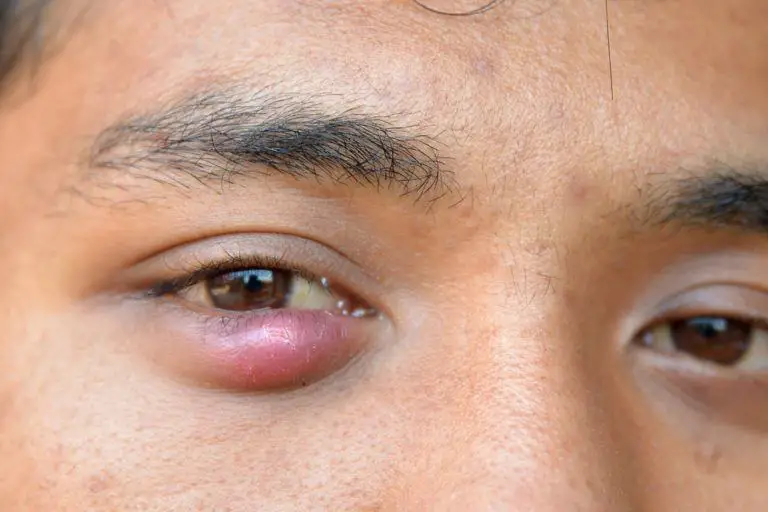
Styes might be the result of frat-boy pranks involving fecal matter on bedding, but other causes are much more common, and usually much less disgusting. Pink eye or Styes don’t really cause much harm, but they both drive you crazy. A stye occurs when bacteria gets inside one of the oil glands in your eyelid. You get a little red, sensitive raised bump in your eyelid; essentially it’s a pimple. And like pimples, a simple little stye is harmless. They just add a new, unwanted dimension to your otherwise lovely appearance. Luckily, treating your stye is super easy; you’ll only have difficulty if you have chronic styes, or if one gets out of hand, affecting your vision or spreading elsewhere. For the run-of-the-mill stye, you could go the laziest route and do absolutely nothing, and it would probably go away with time. But if you’re looking to be more proactive and clear up that stye faster, read on for some simple tips. Don’t worry—you’ll be back to your non-puffy, aesthetically pleasing self soon.
Symptoms
- Red, puffy bump in eyelid
- Itchy eye
- Watery eye
- Pain in eyelid
Best Treatments for Styes
Cleanliness will go a long way in preventing and minimizing styes.
Bacteria clogs the gland, so it makes sense to get bacteria out of the scenario. Wash your hands before touching your eyes. If you wear contacts, clean them daily. If you wear eye makeup, throw out old stuff and replace it, and don’t share with others—that can spread bacteria. And wash your makeup off every night so it has less chance of mucking up your eye.
Soothe your swollen stye with a warm compress.
Take a clean washcloth, wet it with warm water, and slap that baby on your eye for 10‒15 minutes a few times a day. Instant relief. If it gets cold before your time is up, re-wet it with warm water. You can also use warm mashed potatoes for a compress, but be sure to put them in a baggie first, not actually in or on your eye. They stay warmer longer than water, and you’ll also have dinner ready to go when you’re done!
Antibacterial cream might help clear up your stye faster.
Choose your favorite over-the-counter brand and apply it to the affected area. There are even a few ointments specially designed for styes. Be very careful when applying because, unless otherwise directed, that stuff will not feel good if it actually gets in your eye. A doctor, should you choose to see one for your stye, might prescribe something that can be safely put into your eye. For eye care, you could give OcuSOFT Lid Scrub pads a shot, sold at Amazon.
Whatever you do, do NOT pick at, pop, or otherwise bother your stye.
This is a test of will if I’ve ever heard one. The temporary relief you get from rubbing your inflamed eye area can irritate it further and spread more bacteria if your hands aren’t clean. Don’t try to pop it either, for the same reasons. And if you’re brave enough, go without eye makeup until the stye clears up; makeup can further clog your already irritated oil gland. It’ll go away faster if you leave it be and don’t meddle.
A doctor can drain a stye, and get it back under control if there are complications.
Generally speaking, a doctor visit will not be necessary to get rid of your stye. If it hangs around for over a week or so, if your entire eye is affected, or if it bleeds or spreads, then go in. Very large and painful styes can be safely drained by a professional to relieve pressure. If a more serious infection is the problem, then your doc can get you some antibiotics to take care of it.
Stye Complications
The most common, and mild, complication of a stye is getting it again. And again, and again. Some people are just prone to them. A simple stye is just bacteria in an oil gland, but sometimes that little irritation can evolve into full blockage of the gland. This is another potential complication called a chalazion (pronounced kuh-lay-zee-on), and it can get very large and painful, even affecting your vision. It is also possible to spread the infection to the rest of your eyelid, cheek, or other parts of your face. Cellulitis is a danger here. The vast majority of the time you won’t have to worry about this, but it doesn’t hurt to be aware and on the lookout. Generally speaking, just be patient, follow my guidelines, and everything will be hunky-dory. If you do suspect any of these complications, make an appointment with your family physician.
Best Natural Remedies for Styes
Warm water compress. The warmth of the water will feel wonderful on your irritated eye. It should help the hard, clogged oil in the gland loosen up and drain out. As discussed above, the warm water compress is pretty easy to make given you have a cloth around.
Light massage. Softly massaging the affected area for a few minutes every day day might help the gland in question drain. But be very gentle if you try this, and don’t massage it for too long; rough rubbing will be the opposite of helpful.
Time. Bite the bullet and just be patient. Sometimes the only thing to do when you’re not at your best is to just wait it out. Keep the area clean, and the offending stye will very probably take care of itself in a week.